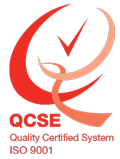Stainless steel plates possess high strength and ductility, making it ideal for all types of building and construction applications in Australia. So that you can maximise the lifespan and use laser cut stainless steel effectively, keep reading for some helpful do’s and don’ts.
Selecting the right grade
Stainless steel comes in many different grades of plate steel. It’s always best to speak to your local steel fabricator for what will be appropriate for your application, but generally speaking the two most commonly used grades are 304 and 316, with 316 being the more corrosion resistant of the two. When using stainless steel in highly corrosive environments – within 5km of the ocean – 316 stainless steel plates and fasteners are ideal to avoid discolouration. Within 304 and 316, there are many stainless steel finish variations and thicknesses, which will need to be taken into consideration for your intended use.
Lubricating threads
Stainless steel fastener engineers encourage all threads to be lubricated prior to assembly to reduce the risk of galling, which is when the thread locks up. This is quite common with larger threads – M16 and up.
Selecting the right surface finish for your environment
The most common stainless steel finishes are No. 4, No. 8, 2B finish and electropolishing. To discover which finish is ideal for your next steel project, read our helpful guide on stainless steel finishes.
Establish a cleaning and maintenance schedule
Where design is a primary factor, especially in situations where it is “front facing”, the steel needs to be cleaned regularly to remove contaminants i.e. salt and rainwater. Doing so will maintain the steel appearance and avoid prolonged exposure to the elements which will cause a tea staining effect or corrosion. See our steel surface cleaning guide for more tips.
Avoiding galvanic corrosion
This is where two dissimilar metals come into contact, react and result in corrosion. This can be seen with lead or copper flashings on a zinc or aluminium roof. Corrosion can be a risk for other metals when they come into contact with stainless steel and the join is wet. Isolating metals with nylon or rubber barriers, such as washers, will reduce the risk of this occurring.
Know where your steel comes from
Certain steel grades are being released to the Australian market with high manganese and low nickel, and are being advertised as 304 and 316 grade steel. With their low chromium, they are not ideal for Australia’s environmental conditions, especially in coastal areas. It’s important to talk to your steel plate provider to understand whether their suppliers are reputable and of high quality.
ShapeCUT has one of the largest stocks of high quality plate steel in Australia, sourced from some of the best steel suppliers in the business. Our steel plates come in a huge range of grades, thicknesses and finishes and are ready to be laser, oxy or plasma cut by our team. Contact us to discuss your next steel project.
Contact Us To Find Out More
We ensure a fast, exact and economical steel solution for our clients. Call our team today to discuss your steel cutting and metal processing requirements.
Get Our Newsletter
Contact details
121 Mica Street, Carole Park,
QLD, 4300, AUSTRALIA
Freecall: 1800 SHAPECUT (1800 742 732)
Telephone: (07) 3271 5600
Facsimile: (07) 3271 5454
Email: sales@shapecut.com.au
Accredited Profile Cutting

Profile Cutting
©2024 ShapeCut | Website design Brisbane by iFactory | Privacy Policy | Search | Sitemap



